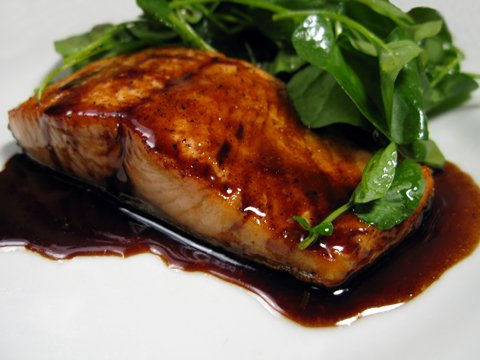We all are aware of the issues about pesticide use, GMO’s and the whole idea of sustainable food production but with so much information, it’s overwhelming to figure out what is best for you and your family.
I for one, do organic produce, wild fish and organic poultry and here are the reasons why I think it is something to consider.
For one thing eating organic means you are ingesting fewer pesticides. A recent study out of the United Kingdom reported that organic produce boasted up to 40 percent higher levels of some nutrients (including vitamin C, zinc and iron) than its conventional counterparts. Additionally, a 2003 study in the Journal of Agricultural and Food Chemistry found that organically grown berries and corn contained 58 percent more polyphenols—antioxidants that help prevent cardiovascular disease—and up to 52 percent higher levels of vitamin C than those conventionally grown.
Recent research by that study’s lead author, Alyson Mitchell, Ph.D., an associate professor of food science and technology at the University of California, Davis, pinpoints a potential mechanism to explain why organic techniques may sometimes yield superior produce.
It’s a difference in soil fertility, says Mitchell: “With organic methods, the nitrogen present in composted soil is released slowly and therefore plants grow at a normal rate, with their nutrients in balance. Vegetables fertilized with conventional fertilizers grow very rapidly and allocate less energy to develop nutrients.” Buying conventional produce from local farmers also has benefits. Nutrient values in produce peak at prime ripeness, just after harvest. As a general rule, the less produce has to travel, the fresher and more nutrient-rich it remains.
We know that organic produce up to now at least is far more expensive and I hope there will come a time when there will be no other choice so the prices will come down but for now it may be unattainable for some to afford. If this is the case there is a list called the “dirty dozen”, these are fruits and vegetables that are heavily sprayed and most contaminated. If you can choose organic for these items you will be doing your health a favor;
Apples
Celery
Strawberries
Peaches
Spinach
Nectarines
Grapes
Sweet Bell Peppers
Potatoes
Blueberries
Lettuce
Kale
I also recommend eating wild fish especially salmon, which, in its farm-raised form, is high in contaminants, has double the saturated fat as wild and dyes added to make the flesh the orange color we are all used to. They are kept in tight quarters and fed soy to increase their weight and the nutritional value is far less. Wild salmon, although more expensive is worth the extra bucks, with more calcium, iron, potassium and half the calories.
Try these delicious recipes for your summer entertaining and remember to read labels and buy local.

Seared Salmon with Balsamic Orange Sauce
Serves 4
Ingredients
1/2 cup fresh orange juice
1/4 cup balsamic vinegar
2 Tb. mirin
1 shallot, minced
1 Tb. orange zest
Salt and pepper, to taste
1 Tb. olive oil
4 wild salmon fillets, 5 oz. each, skin removed
1 Tb. chopped mint
1 Tb. chopped basil
1 Tb. chopped Italian parsley
Procedure
- Combine the juice, vinegar, mirin, shallot and zest in a small saucepan; bring to a simmer over medium heat and cook 5 minutes until reduced to about ½ a cup. Season to taste with salt and pepper.
- Heat a large skillet over med-hi heat and add the olive oil. Sear the salmon for 4 minutes. Season with salt and pepper. Turn and sear another 5 minutes. Transfer to a serving platter. Add the herbs to the sauce and pour the sauce over the fish. Serve warm with rice or mashed potatoes.
Kale Quinoa Patties
Serves 5
Ingredients
2 ½ cups cooked organic quinoa, cooled
3 large eggs. beaten
½ cup grated parmesan
½ cup scallions, minced
2 Tb. olive oil, plus more for sauteeing
4 cups organic kale, veins removed, chopped
1 tsp. sea salt
½ onion, finely diced
2 cloves garlic, minced
¾ cup bread crumbs
Procedure
- Combine the quinoa, eggs, cheese, scallions and salt in a medium bowl.
- Heat the 2 Tb. of the olive oil in a large skillet and sauté the onions and garlic for about 3 minutes. Add the kale and cook until soft and bight green. Transfer the kale mixture to the bowl with the quinoa and add the salt and breadcrumbs.
- Add enough oil to coat the bottom of the skillet and heat the pan. Form the patties and add to the oil. Sauté until browned on each side about 10 minutes. Drain on a paper towel and serve.

Editor’s Note: Amanda Cushman of Simple Real Food Inc., is a culinary educator who has cooked professionally for over 30 years. She has taught corporate team building classes for over 15 years for a variety of Fortune 500 companies including Yahoo, Nike and Google. She began her food career in the eighties and worked with Martha Stewart and Glorious Foods before becoming a recipe developer for Food and Wine magazine as well as Ladies Home Journal. Having lived all over the United States including Boston, NYC, Miami and Los Angeles, she has recently returned to her home state of Connecticut where she continues to teach in private homes as well as write for local publications.
Amanda teaches weekly classes at White Gate Farm and Homeworks and is also available for private classes. Her cookbook; Simple Real Food can be ordered at Amazon as well as through her website www.amandacooks.com
For more information, click here to visit her website.